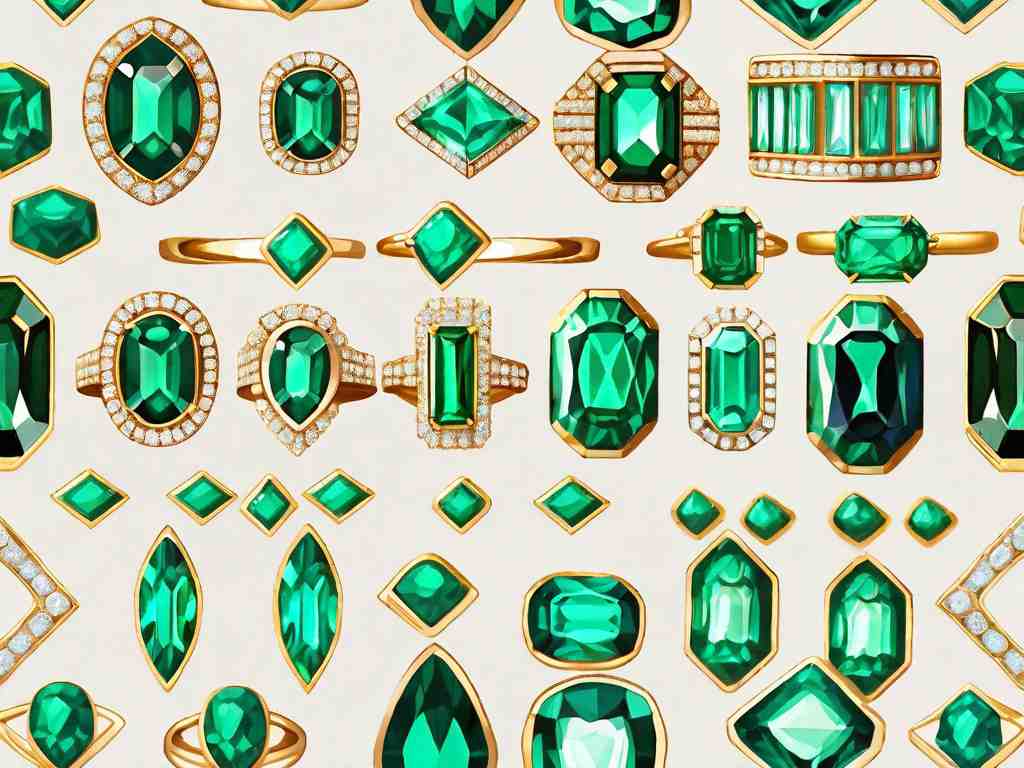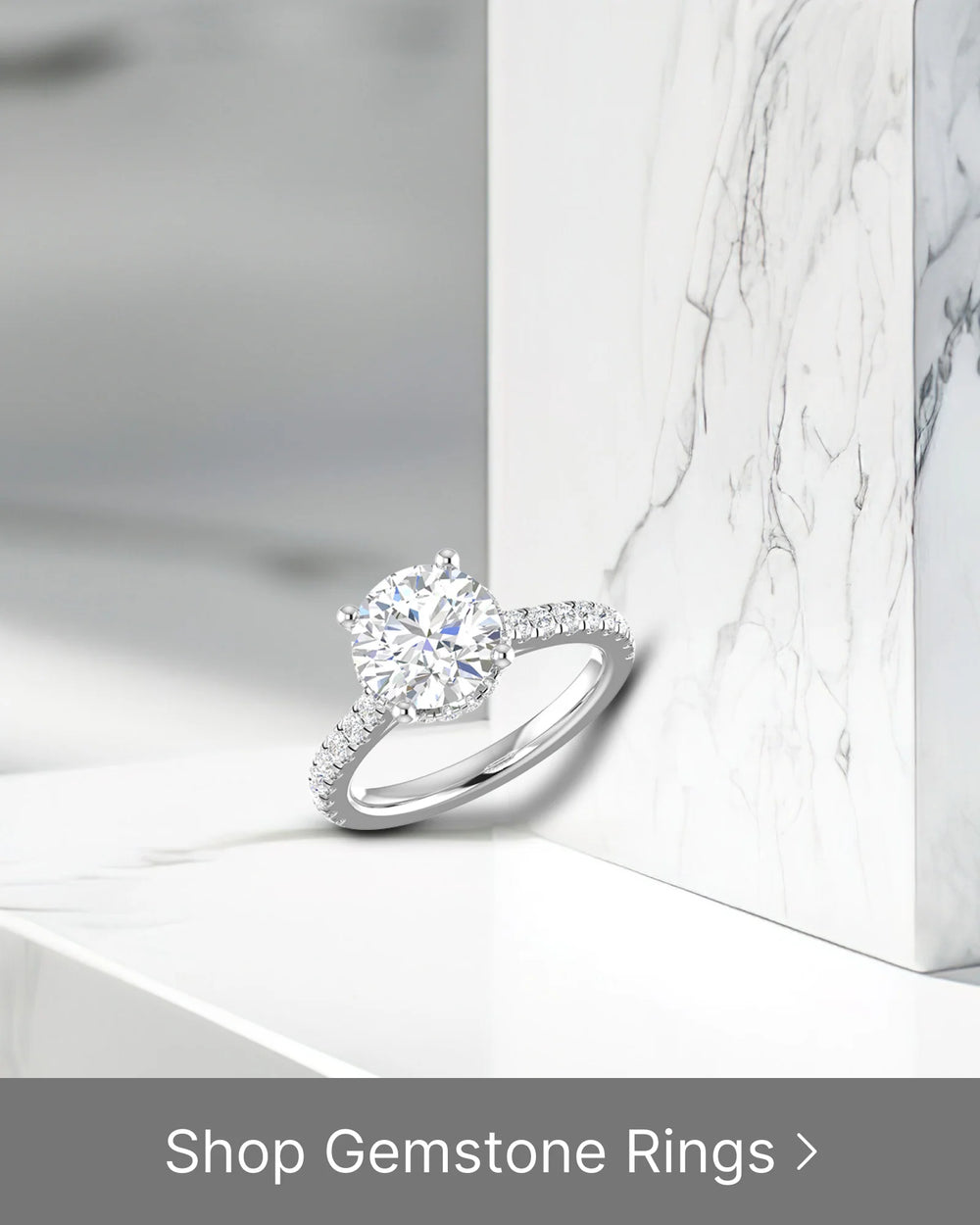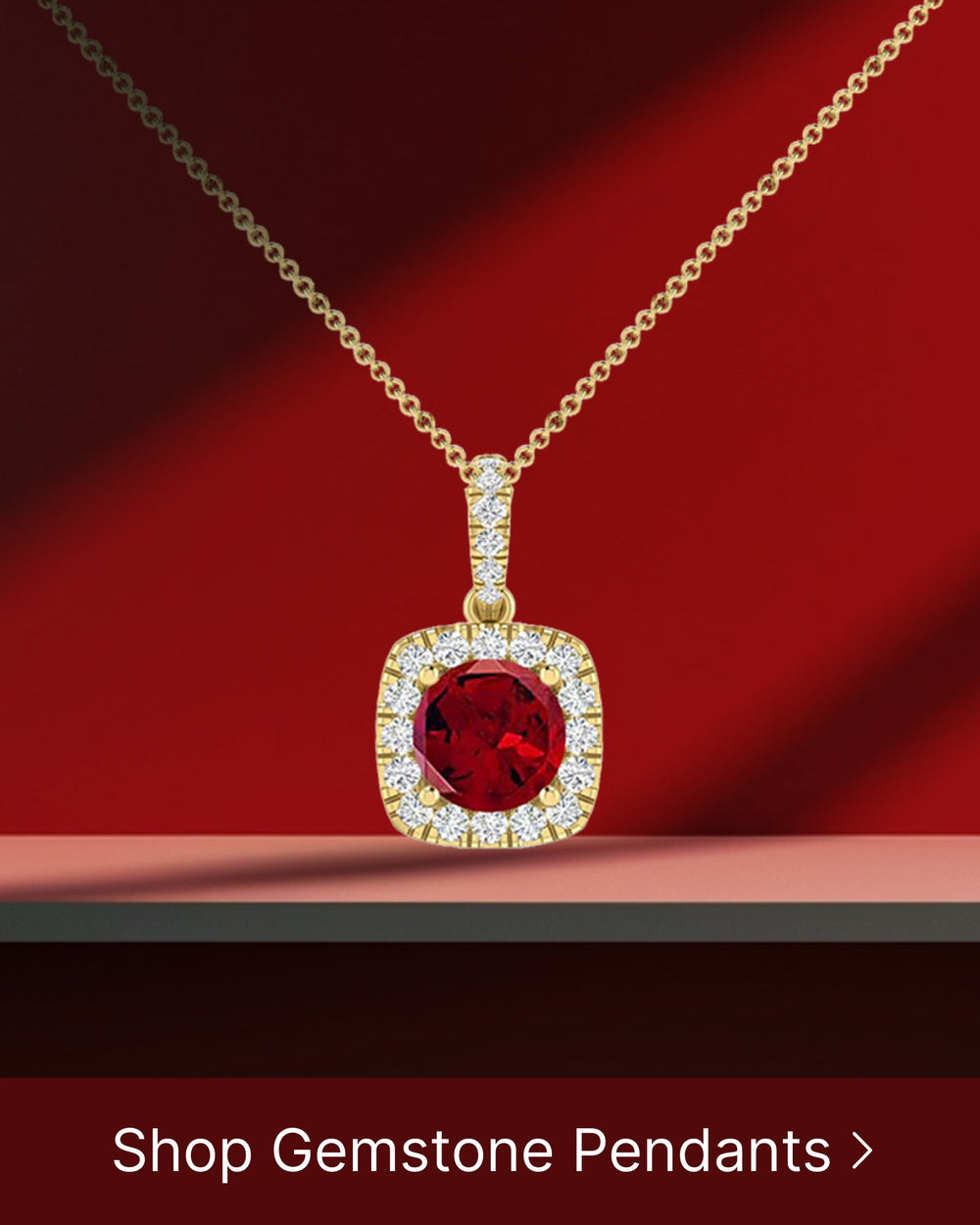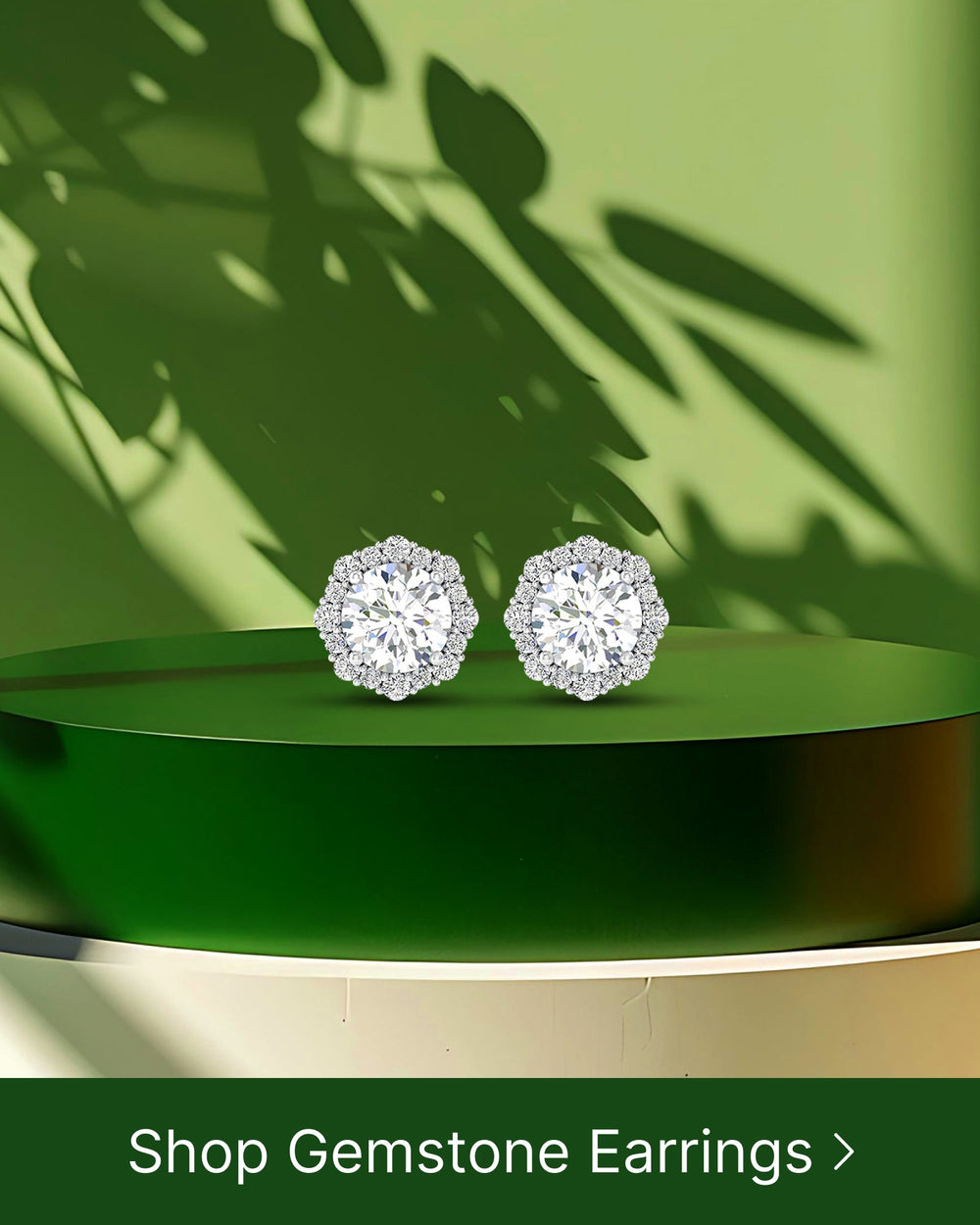Gemstones have fascinated humans for centuries, captivating us with their beauty and allure. Two of the most popular gemstones are emeralds and diamonds. In this article, we will explore in detail the similarities and differences between these two gemstones to help you decide which is the better choice for you.
Understanding the Basics of Gemstones
Gemstones are naturally occurring minerals that possess unique qualities that make them desirable in the world of jewelry. They are often prized for their beauty, rarity, and durability. Emeralds and diamonds are no exception to this rule.
When it comes to gemstones, few can match the captivating allure of emeralds. These exquisite gemstones are a variation of the mineral beryl, colored green by traces of chromium or vanadium. The mesmerizing green hue of emeralds ranges from light to deep shades, evoking a sense of natural beauty that has captivated humans for centuries. It is no wonder that emeralds have been treasured for thousands of years, often associated with beauty, love, and rebirth.
What are Emeralds?
Emeralds, with their rich history and enchanting color, have a unique place in the world of gemstones. The name "emerald" is derived from the Greek word "smaragdos," meaning green gem. This gemstone has been highly regarded by various cultures throughout history. Ancient Egyptians believed that emeralds symbolized fertility and rebirth, often burying them with their deceased as a token of eternal life.
Emeralds have also been associated with love and romance. In medieval times, emeralds were believed to possess the power to reveal the truth of a lover's oath. It was believed that if an emerald was worn close to the heart, it would protect the wearer from infidelity and enchantment. Even today, emeralds are often chosen as engagement rings, symbolizing everlasting love and devotion.
What are Diamonds?
When it comes to gemstones, diamonds reign supreme. These dazzling gemstones are composed of carbon atoms arranged in a crystal lattice structure, giving them their exceptional brilliance and unmatched hardness. Diamonds have long been associated with opulence, power, and eternal love.
The word "diamond" is derived from the Greek word "adamas," meaning invincible or indestructible. This name perfectly captures the enduring nature of diamonds, as they are the hardest naturally occurring substance known to man. Their remarkable hardness makes them highly resistant to scratching and ensures that they can withstand the test of time.
Diamonds have a long and storied history, dating back thousands of years. In ancient times, diamonds were believed to possess mystical powers and were often worn as talismans to protect against evil and bring good fortune. In more recent history, diamonds have become a symbol of wealth and status, adorning the crowns and jewelry of royalty and the elite.
Today, diamonds continue to hold a special place in the world of jewelry. They are often chosen as the centerpiece for engagement rings, symbolizing the eternal love and commitment between two individuals. The brilliance and sparkle of a diamond are unmatched, making it a timeless and cherished gemstone.
The Formation Process of Emeralds and Diamonds
The geological processes responsible for the formation of emeralds and diamonds are fascinating and complex. Understanding these processes can provide valuable insights into the unique properties of each gemstone.
Emeralds and diamonds are two of the most sought-after gemstones in the world. Their beauty and rarity make them highly prized by collectors and jewelry enthusiasts. But have you ever wondered how these exquisite gemstones are formed?
How are Emeralds Formed?
Emeralds are formed deep within the Earth's crust, where high-pressure conditions transform beryl minerals into emerald crystals. The journey of an emerald begins millions of years ago, when magma rises to the surface and cools, forming igneous rocks. Over time, these rocks undergo weathering and erosion, releasing minerals such as beryl into the surrounding environment.
As these minerals are exposed to heat and pressure, they undergo a transformation. The presence of specific elements, such as chromium and vanadium, along with geological conditions like hydrothermal activity, play a crucial role in the formation of these captivating gemstones. The beryl minerals react with these elements and undergo a process called metasomatism, where the chemical composition of the minerals changes, giving rise to the vibrant green color that is characteristic of emeralds.
Emeralds are typically found in regions with geological features such as mountain ranges, where the Earth's crust has been subjected to intense tectonic activity. This activity creates the perfect conditions for the formation of emeralds, as the high pressures and temperatures necessary for their creation are present.
How are Diamonds Formed?
Diamonds, on the other hand, are formed under extreme pressure and temperature conditions deep within the Earth's mantle. The journey of a diamond from the depths of the Earth to the surface is nothing short of miraculous.
Like emeralds, diamonds also begin their formation millions of years ago. It starts with carbon atoms being subjected to immense pressure and temperature, causing them to crystallize and form diamond structures. This process occurs at depths of around 150 to 200 kilometers below the Earth's surface, where the pressure is equivalent to around 725,000 pounds per square inch.
Over millions of years, geological forces such as volcanic eruptions and tectonic movements bring these diamond-bearing rocks closer to the surface. The intense heat and pressure generated during these events propel the diamonds upwards, eventually reaching the Earth's crust.
Once at the surface, diamonds are often found in alluvial deposits, which are formed by the erosion of rocks containing diamonds. These deposits can be found in riverbeds, ocean floors, and even on land. The process of mining diamonds involves extracting these deposits and carefully sorting and grading the diamonds based on their size, color, and clarity.
It is truly remarkable to think about the incredible journey that both emeralds and diamonds undergo to become the precious gemstones we admire and cherish. From the depths of the Earth's crust to the surface, these gemstones are a testament to the geological forces that shape our planet.
Physical Properties of Emeralds and Diamonds
The physical properties of gemstones greatly impact their appearance, durability, and overall value. Let's delve into the unique characteristics of emeralds and diamonds.
Emeralds and diamonds are two of the most sought-after gemstones in the world. They both possess distinct physical properties that contribute to their allure and desirability.
Color and Clarity
One of the most distinguishing features of emeralds is their captivating green color. Emeralds can range from a pale green to a deep, rich hue. The intensity of their color is determined by the presence of chromium and vanadium in their chemical composition.
However, it is important to note that emeralds often have natural inclusions, which are tiny imperfections that can affect their overall clarity. These inclusions, often referred to as "jardin," give each emerald a unique fingerprint, making them truly one-of-a-kind.
Diamonds, on the other hand, are known for their exceptional clarity. They are renowned for their ability to reflect light and achieve remarkable brilliance. The absence of inclusions contributes to their overall value and desirability. The clarity of a diamond is graded on a scale ranging from internally flawless (IF) to included (I3), with the former being the most valuable.
Hardness and Durability
Emeralds have a hardness rating of 7.5 to 8 on the Mohs scale. While this makes them relatively durable gemstones, they are more prone to scratches and fractures compared to diamonds. This is due to the presence of natural inclusions, which can weaken the stone's structure.
Diamonds, on the other hand, are the hardest natural material known to man, earning a perfect 10 on the Mohs scale. Their exceptional hardness makes diamonds highly resistant to scratching, ensuring that their beauty endures for generations. This hardness is a result of the tightly bonded carbon atoms within the diamond crystal lattice.
Furthermore, diamonds have a high thermal conductivity, meaning they can disperse heat quickly. This property makes diamonds ideal for use in industrial applications, such as cutting tools and heat sinks.
Both emeralds and diamonds are precious gemstones that hold a special place in the world of jewelry. Their physical properties, from color and clarity to hardness and durability, contribute to their unique beauty and desirability. Whether you prefer the vibrant green of an emerald or the timeless brilliance of a diamond, these gemstones are sure to captivate and enchant.
The Value of Emeralds and Diamonds
When considering the value of emeralds and diamonds, several factors come into play. Let's explore the factors that influence the value of each gemstone.
Factors Determining the Value of Emeralds
The value of an emerald is determined by several factors, including color, clarity, size, and origin. Emeralds with an intense green color, excellent clarity, and larger carat weight are highly sought after and command a higher price.
Factors Determining the Value of Diamonds
Diamonds are also evaluated based on the "Four Cs": color, clarity, cut, and carat weight. The absence of color, high clarity, impeccable cut, and larger carat weight contribute to a diamond's value. Additionally, factors such as fluorescence, origin, and shape can also impact a diamond's worth.
The Symbolism of Emeralds and Diamonds
Throughout history and across cultures, both emeralds and diamonds have held significant symbolism and meaning. Let's explore their individual significance.
Emeralds in History and Culture
Emeralds have been revered for centuries for their association with love, fertility, and rebirth. In ancient civilizations such as Egypt and Rome, emerald jewelry was considered a symbol of immortality and eternal love. Even today, emeralds continue to capture the hearts of many.
Diamonds in History and Culture
Diamonds have a long and storied history that spans centuries. They have symbolized wealth, power, and romance throughout different cultures. Diamonds became synonymous with everlasting love when they were popularized by De Beers in the 1940s with the famous slogan, "A diamond is forever."
In conclusion, when comparing emeralds and diamonds, it becomes evident that both gemstones possess unique qualities that make them highly desirable. Emeralds captivate us with their vibrant green color and rich symbolism, while diamonds dazzle with their extraordinary brilliance and unmatched durability. Ultimately, the better gemstone depends on personal preferences, budget, and the desired symbolism one seeks in a precious gem.





